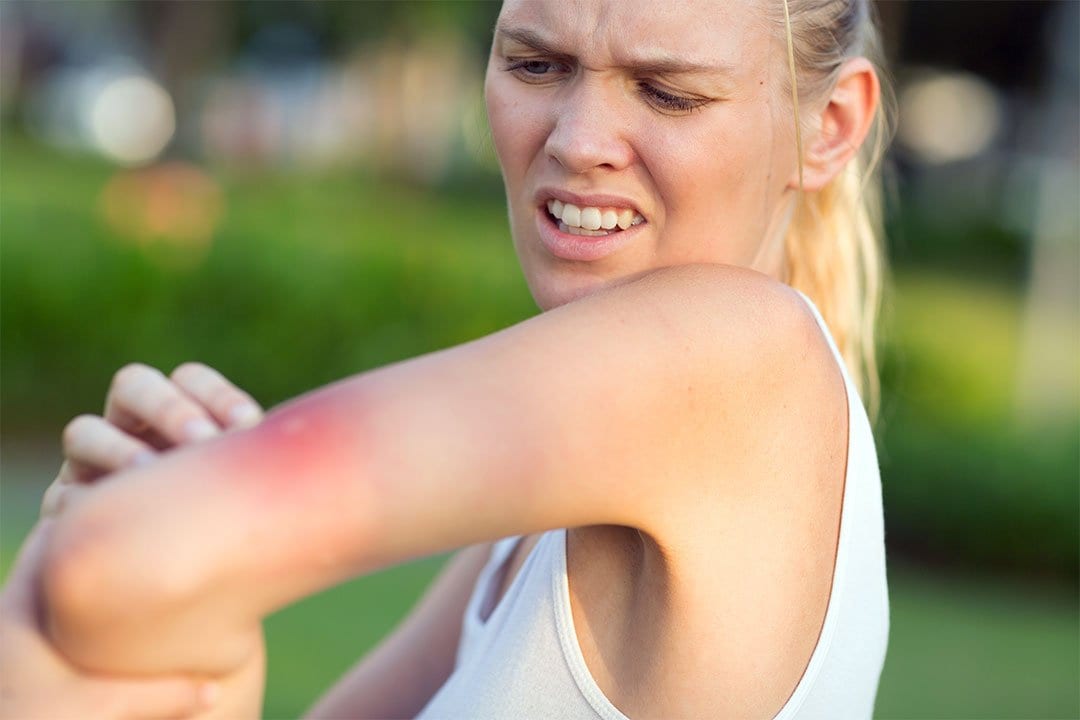Bug Bites and Stings
 Warm weather is here, and everyone is outside enjoying all our great state has to offer. As much as we love the sunshine and outdoors, in Minnesota, summer also means pesky bugs.
Warm weather is here, and everyone is outside enjoying all our great state has to offer. As much as we love the sunshine and outdoors, in Minnesota, summer also means pesky bugs.
Insects and other creatures like bees, wasps and spiders usually attack when they feel like they're in danger. Sometimes they're protecting their territory, web or nest. Other insects such as mosquitoes and ticks suck blood to survive.
Here's how to cope with some of our most common Minnesota bug bites and stings.
Mosquito Bites
When you're bit by a mosquito, it pierces your skin to suck up blood, and as it's feeding on you, it also injects saliva into your skin. Your body's reaction to the saliva results in a bump and itching. Mosquito bites typically create a puffy and reddish bump, but some people may experience more severe symptoms. Try not to scratch the affected area. Scratching will make the itch worse and can cause the bite to swell, bleed or get infected. Wash the area with soap and water and apply an ice pack to reduce swelling and itching. A mixture of baking soda and water can reduce the desire to itch, or you can use an over-the-counter anti-itch or antihistamine cream.
Tick Talk
If you find a tick attached to yourself or a family member, it should be removed as soon as possible. Use tweezers to grab the tick close to your skin and pull it off in one smooth upward motion. After removal, clean the bite area and wash your hands with rubbing alcohol or soap and water. Never crush a tick with your fingers. You can kill the tick by putting it in a jar of alcohol or flushing it down the toilet.
If you develop a rash or fever within 30 days of removing a tick, visit your doctor and let them know about your recent tick bite, when the bite occurred, and where you likely acquired the tick bite.
Insect stings
Most stings from bees, wasps, yellow jackets and hornets, cause only minor discomfort. An insect sting can happen anywhere on the body and can be painful and startling. The two greatest risks from insect stings are allergic reactions and infection. Reactions normally occur at the site or surrounding the sting and can include pain, swelling, redness, itching or warmth.
Signs of a more serious and possibly life-threatening allergic reaction to an insect sting include coughing, tickling in the throat, tightness in throat or chest, breathing problems, wheezing, nausea or vomiting, dizziness or fainting, sweating, and hives over a large part of the body. If you experience any of these symptoms, call 911 or your local emergency medical service for immediate care, or if the sting happened in your mouth, nose, or throat area.
If you have a known or suspected allergy to stings you should always carry allergy medicine (such as an EpiPen) and know how to use it, along with a medical alert bracelet with your allergy information.
And remember, prevention is always worth the extra steps. Apply insect repellant containing DEET often, wear longer pants and shirts if you'll be outdoors for an extended period, and opt for lighter colored clothing.
With a few simple steps you and your family can enjoy summer without the battle of the bugs.